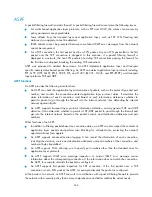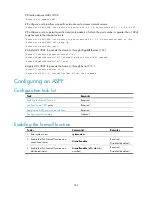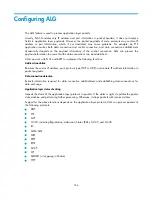
343
Configuring an SSL client policy
An SSL client policy is a set of SSL parameters for a client to use when connecting to the server. An SSL
client policy takes effect only after it is associated with an application layer protocol.
Configuration prerequisites
If the SSL server is configured to authenticate the SSL client, you must configure the PKI domain for the
SSL client policy to use to obtain the certificate of the client. For more information, see "
Configuration procedure
To do…
Command…
Remarks
1.
Enter system view.
system-view
—
2.
Create an SSL client policy
and enter its view.
ssl client-policy
policy-name
Required.
3.
Specify a PKI domain for the
SSL client policy.
pki-domain
domain-name
Optional.
No PKI domain is configured
by default.
4.
Specify the preferred cipher
suite for the SSL client policy.
prefer-cipher
{
rsa_3des_ede_cbc_sha
|
rsa_aes_128_cbc_sha
|
rsa_aes_256_cbc_sha
|
rsa_des_cbc_sha
|
rsa_rc4_128_md5
|
rsa_rc4_128_sha
}
Optional.
rsa_rc4_128_md5
by
default.
5.
Specify the SSL protocol
version for the SSL client
policy.
version
{
ssl3.0
|
tls1.0
}
Optional.
TLS 1.0 by default.
6.
Enable certificate-based SSL
server authentication.
server-verify enable
Optional.
Enabled by default.
NOTE:
If you enable client authentication on the server, you must request a local certificate for the client.
Displaying and maintaining SSL
To do…
Command…
Remarks
Display SSL server policy
information
display ssl server-policy
{
policy-name
|
all
} [
|
{
begin
|
exclude
|
include
}
regular-expression
]
Available in any view
Display SSL client policy
information
display ssl client-policy
{
policy-name
|
all
} [
|
{
begin
|
exclude
|
include
}
regular-expression
]






























